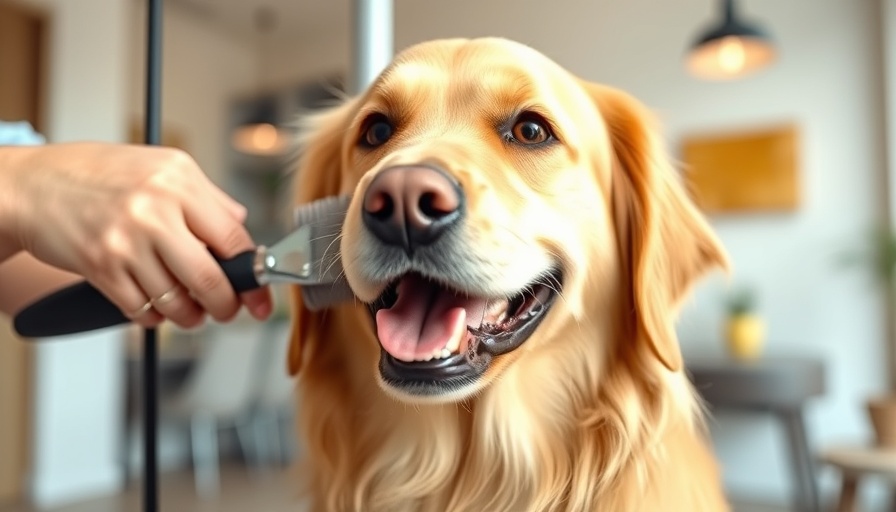
Understanding the Frustration Behind Leash Pulling
Walking your dog should be an enjoyable experience, a time when you and your furry friend can connect and explore the world together. Unfortunately, for many pet owners, it often becomes a battle against a strong, pulling force on the other end of the leash. It's crucial to recognize that leash pulling is not an act of rebellion but rather a symptom of excitement, confusion, or a lack of proper training.
Decoding Your Dog's Behavior: Why Leash Pulling Occurs
Dogs are driven by instincts and impulses, and the outside world can be overwhelmingly stimulating. From intriguing smells to sounds they can barely resist, it’s like stepping into a vibrant amusement park for them. Many dogs pull due to a sheer lack of impulse control. They see something exciting—perhaps a squirrel or another dog—and their instinct is to rush towards it.
Moreover, it's vital to understand that owners often unwittingly reinforce bad behaviors. When dogs pull forward and get rewarded with something interesting—like a tree to sniff or a fellow canine companion—their action is unjustly validated. This cycle reinforces pulling, making it a harder habit to break.
Tips for Stress-Free Walks: Implementing Positive Reinforcement
To cultivate a more peaceful walking experience, positive reinforcement is your best friend. Start training your dog in a controlled, distraction-free environment. Reward them for walking beside you calmly. Gradually, as they become more confident, you can step into busier areas. Utilize several tools that aid in encouraging better behavior: a well-fitted harness, a suitable leash length, and a treat pouch can dramatically improve your walking experience. Also, avoid retractable leashes; they can create an illusion of freedom while inadvertently increasing tension.
Learning Together: Embracing Progress and Setbacks
Training takes time, and it is natural for progress to ebb and flow. There may be days when your dog seems to grasp the concept and others when they don’t. It is essential to remain patient and avoid mean reprimands or punishment; your dog is a product of their learning environment. If struggles continue, consider seeking professional guidance. Trainers can offer tailored advice and techniques that cater to your specific situation, fostering a peer-like bond between you and your pet.
Beyond the Walk: Building a Bond of Trust and Connection
A peaceful walk is just a reflection of a more profound connection. Utilizing these strategies fosters not only obedience but also reinforces trust. Dogs are incredibly perceptive; when they sense their owner is calm and encouraging, they are more likely to mirror that behavior. Your walks can evolve from chaotic affairs into tranquil journeys of discovery, strengthening the relationship you share with your dog.
Why Community Resources Matter for Pet Owners
Many local communities offer programs like obedience classes and socialization opportunities for dogs. These provide spaces where pets can learn while also meeting their peers. Engaging with local pet resources encourages a stronger community bond as dogs become socialized within their neighborhood. Plus, as pet owners join together, a support network is created, allowing for shared tips and experiences. The joy of walking your dog shouldn’t have to be a solo endeavor!
Taking a walk with your dog can transform from an exhausting ritual into a cherished experience by addressing the root causes of leash pulling, implementing positive training methods, and embracing the journey of learning together. Remember, moments of joy are shared moments conquered, and they can lead to a healthier relationship.
Are you ready to embark on this journey to enjoy stress-free dog walks? Take the first step by applying these tips during your next outing. Share your success stories with others in your pet community, inspiring them to create playful, peaceful walks with their furry companions too!
 Add Row
Add Row  Add
Add 




Write A Comment